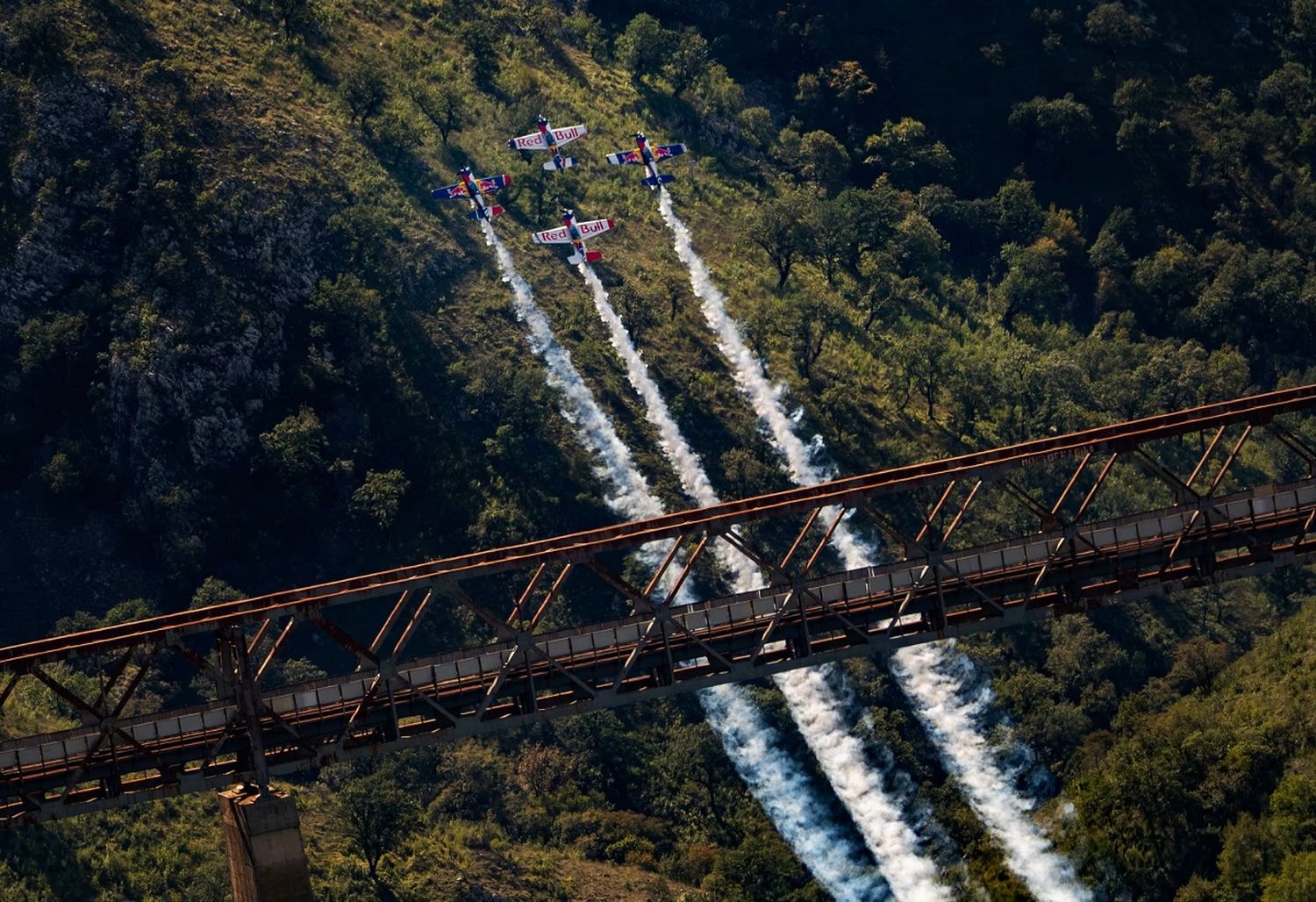400 km/h Stunt: Red Bull’s Flying Bulls Execute Unprecedented Loop Around Railway Viaduct
One of the most renowned aerobatic teams in the world, the Flying Bulls Aerobatics Team from Red Bull, achieved an unprecedented feat: an inverted formation maneuver around the Mala Rijeka Bridge in Montenegro, one of the tallest railway viaducts on the planet.
Flying at speeds of up to 400 km/h and with only a few meters of separation between aircraft, the group demonstrated exceptional skills, redefining the boundaries of what is possible in aerobatic aviation.
The feat involved forces ranging from -5G to +7G, as well as never-before-seen maneuvers, requiring total concentration and highly precise teamwork, according to our partner outlet, Aeroin. The looping maneuver, absolutely unique worldwide, was executed over a bridge in a narrow valley where any mistake could have been fatal.

Unique challenges in an iconic setting
The chosen stage was the spectacular valley that hosts the Mala Rijeka Bridge, known for its challenging geography. “We were looking for a suitable location in the Czech Republic, but there were always obstacles, such as cables or proximity to residential areas. In Montenegro, we found the perfect setting, with open space and an impressive landscape” explained Stanislav Čejka, the team leader.
The complexity of the maneuver required months of planning. Since February, the pilots engaged in intensive training, including overflights and progressive tests leading to the execution of the inverted looping around the bridge. “Each stage was meticulously planned. The valley is very narrow, and mistakes are not allowed” commented Čejka.
Technical precision and team trust
One of the most challenging maneuvers was the inverted looping, something never before performed under such extreme conditions. “It was extremely difficult, especially because of the constant need to dodge the bridge pillars. The lead pilot must be absolutely precise, or there’s a risk of collision” emphasized Martin Špaček, a team member.
Radio communication between the pilots was kept to a minimum, with simple commands such as “loop” or “push” “Each position in the formation is fixed, and trust in the leader is essential. There’s no room for corrections during the flight” added Špaček.
The crucial role of the FPV drone
In addition to the four aircraft, an FPV drone operated by the pilot known as Cola captured unique footage of the feat.
“Flying at 400 km/h and recording alongside the aircraft required quick and precise decisions. It was essential to always stay one step ahead” explained Cola. The use of the drone was key to capturing the maneuver from unprecedented angles, showcasing both human skill and technological advancements.
Overcoming fears and celebrating success
Although the pilots acknowledged the risks, rigorous training and mutual trust helped them overcome fear. “Of course, fear exists, but we know we’re well-trained and have a reliable leader” said Čejka. After their success, the team celebrated with relief and gratitude. “I said over the radio that I would fly with Stanislav forever. It was an indescribable feeling” shared Tvrdík.
The video of the feat:



Comentarios
Para comentar, debés estar registrado
Por favor, iniciá sesión